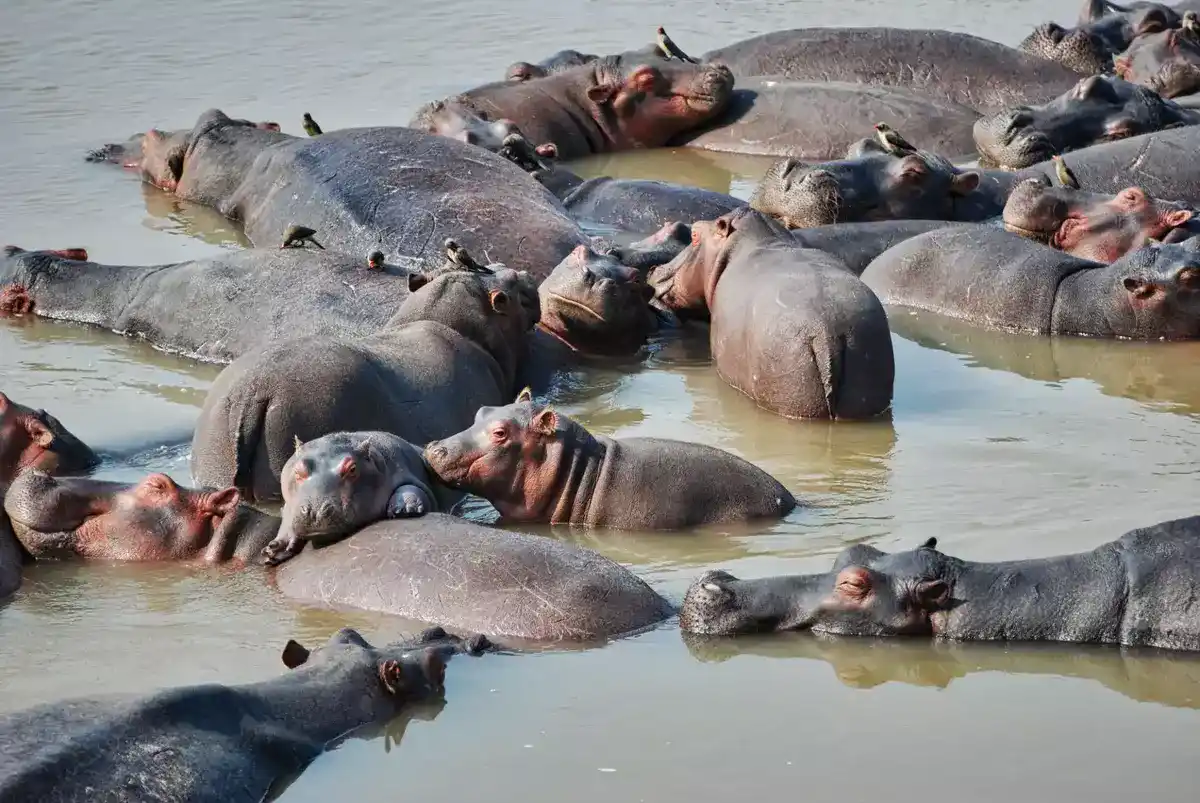
Where do hippos live? Hippos are large semi-aquatic mammals known for their barrel-shaped bodies, short legs, and huge mouths filled with impressive teeth. Hippos are found in various freshwater habitats, from dense forests to open savannas. While their populations have declined due to habitat loss and poaching, they can still be found in many protected areas.
Hippos live in sub-Saharan Africa. They live in areas with abundant water, as they spend most of their time submerged to keep their skin cool and moist. As amphibious animals, hippos spend up to 16 hours daily in the water.
Where Do Hippos Live?
Hippopotamuses are native to Africa, where they can be commonly found. These creatures spend a considerable amount of time submerged in water, approximately 16 hours each day, to regulate their body temperature, maintain moisture, and avoid the harsh sun.

When the sun sets and the temperature drops, hippos leave their aquatic habitat to graze on nearby vegetation. They stay close to their water source, usually within a 3-mile radius, such as a watering hole or lake.
Throughout time, the habitat of hippos has transformed, and currently, it’s common to observe them in nations situated south of the Sahara Desert. Additionally, hippos tend to inhabit National Parks.
Where Do Most Of The Hippos Live?
The East African region, including Kenya, Uganda, Zambia, Tanzania, and Mozambique, boasts the largest concentration of hippopotamuses globally. The population of these massive herbivorous animals in the region is estimated to be approximately 70,000.
Western Africa is home to the hippopotamus, an aquatic mammal. These animals are commonly found in countries like Angola, Gambia, Somalia, and Togo, though their numbers have decreased in these regions.
Hippos in central Africa inhabit the forest zone near the main river. As a result, the current number of hippos in this region is around 1000, which starkly contrasts the population of 30,000 that existed before. Sadly, their Congo population has significantly decreased due to illegal poaching for their valuable teeth.
Where Do Hippos Have Become Extinct?
Hippos were once prevalent in Egypt, Liberia, Mauritania, and Algeria. However, their population has significantly declined, and they are on the brink of extinction in these countries. The situation has changed drastically, and the population of hippos has decreased significantly.
Do Hippos Live In National Parks?
The natural habitat of hippos is within the boundaries of several national parks in Africa, such as Murchison Falls National Park, Serengeti National Park, Chobe National Park, and Queen Elizabeth National Park. These large mammals reside in and around water bodies in these parks.
Regrettably, hippos have been experiencing a significant loss of their natural living spaces due to deforestation and diminished grazing areas. Additionally, the impact of climate change is causing the reduction or vanishing of water sources. Consequently, many hippos seek refuge and a place to reside within national parks where they can be protected.
Where Do Pigmy Hippos Live?
The pygmy hippopotamus differs from its larger relative, the common hippopotamus, in terms of its habitat. The pygmy hippopotamus is typically found around stream banks, swamps, and forests. Unlike the common hippopotamus, the pygmy hippopotamus is restricted to four countries: Ivory Coast, Guinea, Sierra Leone, and Liberia.
Final Thoughts
In conclusion, hippos are native to sub-Saharan Africa and can be found in various freshwater habitats. They spend most of their time submerged in water to regulate their body temperature and avoid the harsh sun. Hippos tend to inhabit national parks, where they can be protected from deforestation and poaching.
While the population of hippos has significantly declined in some regions, there are still many protected areas where they can be observed. The pygmy hippopotamus, a smaller relative of the common hippopotamus, is restricted to four African countries and can be found around stream banks, swamps, and forests.

